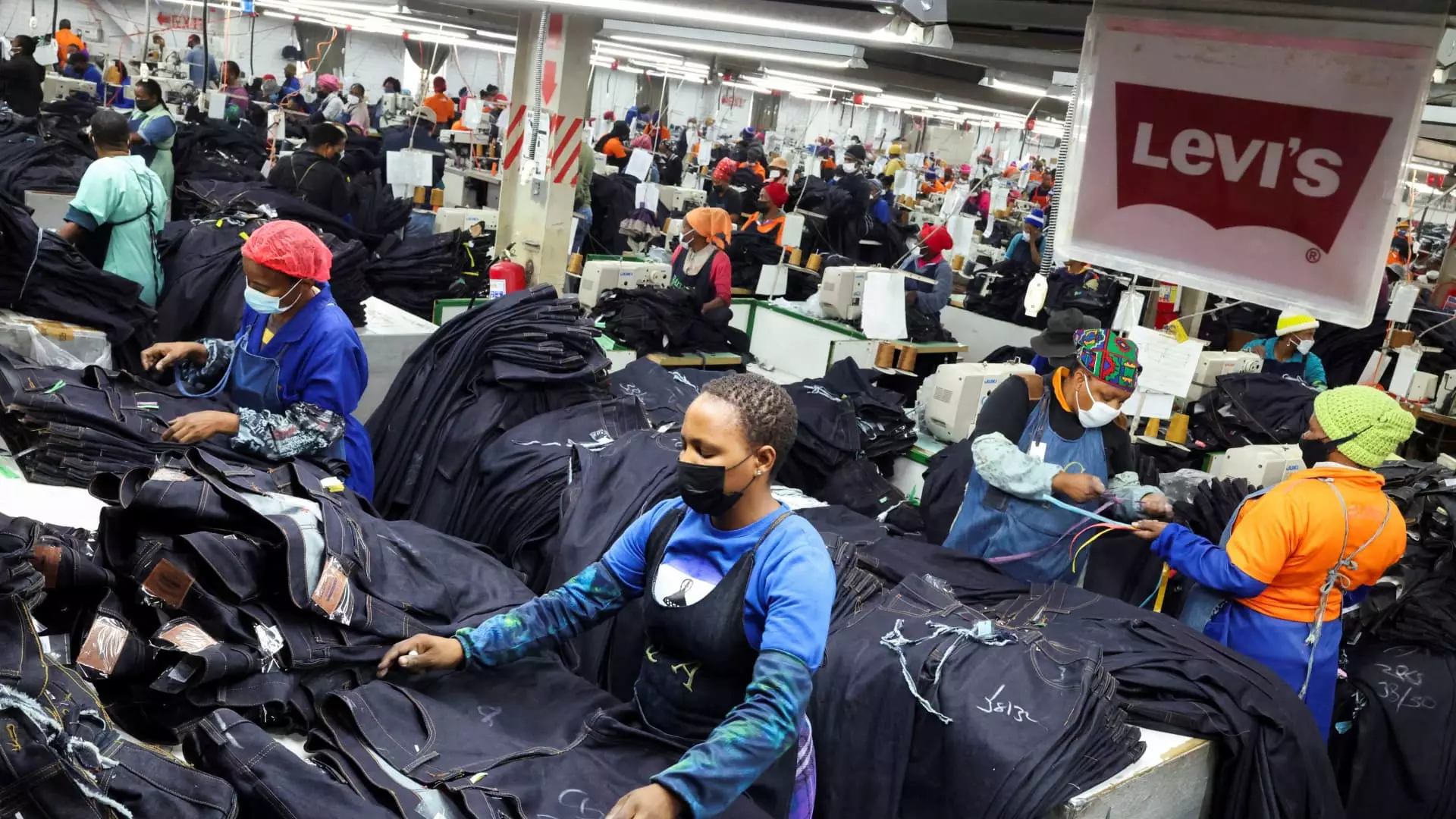The recent bold steps by Levi Strauss in revising its annual guidance spotlight the precariousness of modern supply chain management in an era of unpredictable trade policies. While the company projects a modest increase in profits and sales, the underlying reality is much more complex. The looming threat of tariffs—especially those targeting Southeast Asian manufacturing hubs—exposes the vulnerability of apparel giants heavily reliant on international sourcing. Levi’s decision to absorb costs temporarily showcases a reactive strategy, but it also underscores an unsettling dependency on geopolitical stability that is increasingly fragile. The broader implication is that no corporation, regardless of its size, is immune to the ripple effects of American protectionism.
In practical terms, Levi’s cautious optimism hinges on assumptions that could be obliterated overnight — particularly those related to tariff rates. Exporting from countries like Pakistan, Bangladesh, and Indonesia, Levi’s faces a future where days of smooth operations could give way to prolonged negotiations and escalating duties. The administration’s unpredictability complicates forecasting and forces supply chain managers to adopt a cocktail of contingency plans, many of which are inherently imperfect. What this exposes is a fundamental flaw in our globalized economic model: the illusion of resiliency becomes a mirage when political winds shift sharply and swiftly.
Strategic Shifts Signal a Shift Toward Consumer-Centric Innovation
Amidst the chaos, Levi’s leadership has demonstrated a remarkable knack for reimagining its business model to remain competitive. CEO Michelle Gass’s emphasis on pivoting away from wholesale channels toward direct-to-consumer sales is not merely a tactical move but a strategic overhaul. This approach capitalizes on higher margins and richer customer insights, which are crucial in an era marked by supply chain disruptions and volatile tariffs. It’s a bold reminder that adapting to adversity often entails radical restructuring rather than incremental tweaks.
Levi’s aggressive promotion of e-commerce and exclusive collaborations, such as the high-profile partnership with Beyoncé, exemplify an understanding that relevance in the modern marketplace hinges on cultural engagement. Such partnerships serve not only as marketing tools but also as signals of a brand willing to reinvent itself, extending beyond the traditional denim archetype and into broader fashion and lifestyle spheres. These efforts are designed to foster a resilient consumer base, one that isn’t easily swayed by economic headwinds or political rhetoric. They reflect a nuanced comprehension that in difficult times, emotional and cultural resonance can be more powerful than pricing strategies alone.
Financial Health as a Reflection of Broader Market Trends
Levi’s recent earnings report presents a paradox: while it beats expectations and raises its full-year revenue forecast, the underlying numbers reveal ongoing vulnerabilities. A significant part of the company’s optimism stems from a robust second quarter, driven by lower discounts, rising direct sales, and innovative product lines. Yet, the slight reduction in gross margin expectations indicates the inescapable impact of tariffs on profitability. This margin compression is a stark manifestation of how external policies seep directly into corporate finances, forcing companies to make difficult choices about pricing, promotion, and investment.
The company’s ability to navigate these headwinds with a relatively adaptable business model suggests resilience, but it also raises uncomfortable questions about sustainability. How long can Levi’s sustain absorbing costs without passing them onto consumers? Will consumers accept premium pricing as tariffs chip away at margins? Such questions epitomize the delicate balancing act faced by industry leaders who must uphold brand identity and profitability simultaneously.
Reimagining the Future of Apparel: From Denim to Lifestyle
Levi’s strategic push beyond traditional denim signifies a broader understanding that contemporary consumer preferences demand more than classic jeans. By expanding into women’s fashion, tops, and lifestyle collaborations, the company is attempting to diversify its revenue streams and reduce vulnerability to supply chain shocks focused on a narrow product segment. The improvement in women’s apparel sales underscores an important shift: the recognition that gender diversification and product innovation are vital to long-term relevance.
This shift also reveals a deeper cultural change. Levi’s is embracing a more inclusive, versatile image, aligning itself with social trends around gender and identity while attempting to maintain its core identity rooted in authenticity. Such evolution isn’t just cosmetic; it’s an essential response to a changing marketplace where consumers increasingly demand brands that reflect their values and lifestyles. This strategic pivot may ultimately determine whether Levi’s retains its iconic status or fades into the background of a more fragmented fashion industry.
Levi’s trajectory in the face of economic and political upheaval isn’t just a tale of corporate resilience; it is a mirror reflecting the fragility and adaptability of modern capitalism. While the company’s recent financial successes inspire cautious optimism, they also serve as a warning about the limits of reactive strategies in an unpredictable world. It’s evident that Levi’s survival depends increasingly on innovative branding, supply chain diversification, and a keen understanding of cultural currents. These are not merely corporate tactics—they are survival skills required for navigating the turbulent waters of 21st-century global economics. Ultimately, Levi’s story underscores that resilience isn’t just about weathering storms but about transforming risk into opportunity—a lesson that many corporations would do well to heed in the shifting landscape of geopolitics and consumer expectation.

